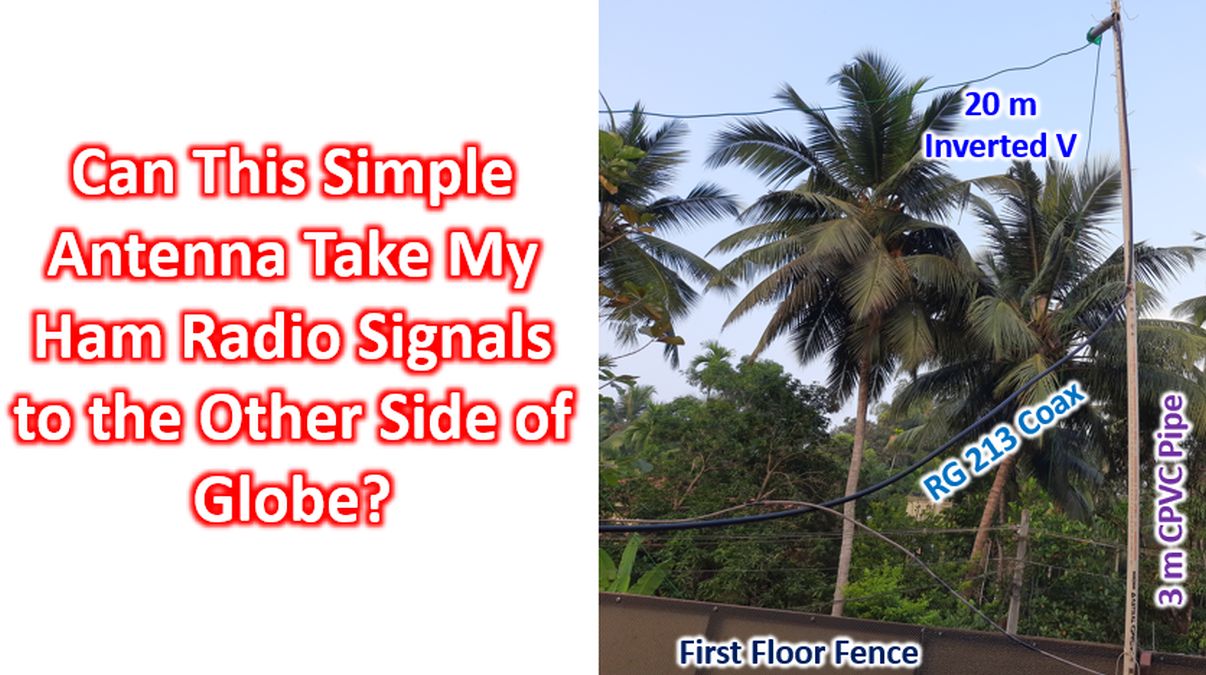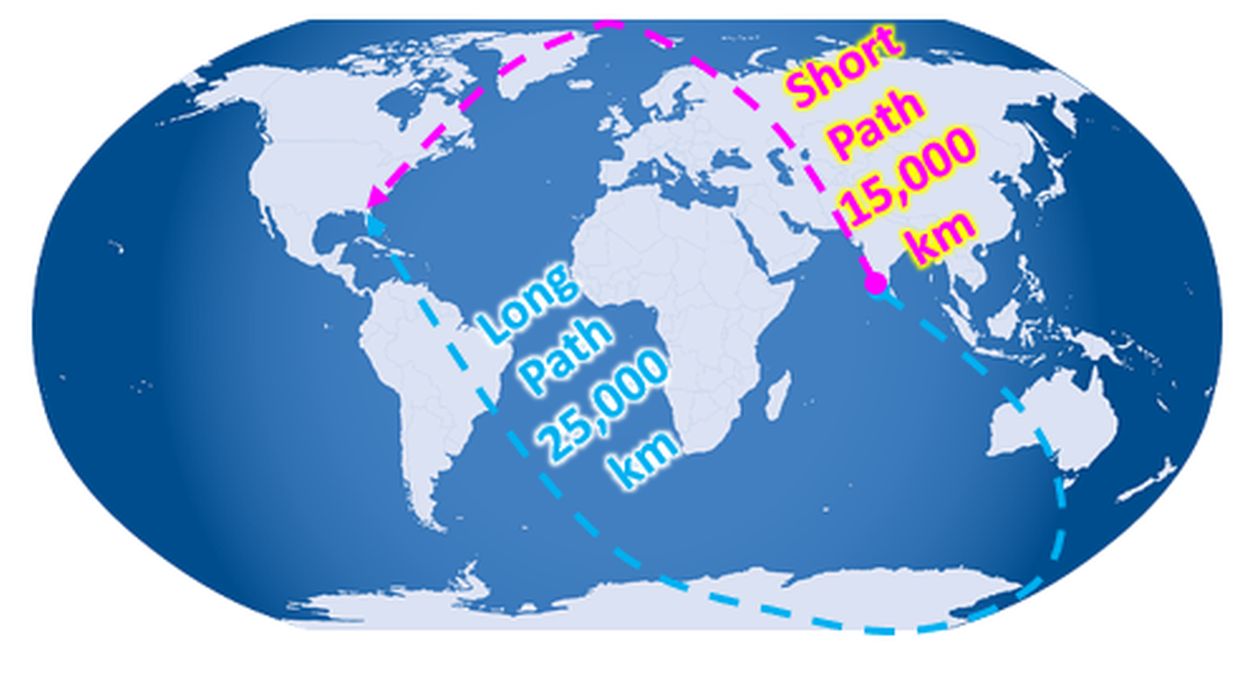Can This Simple Antenna Take My Ham Radio Signals to the Other Side of Globe?
Recently I had made a simple inverted V antenna for 20 m using 2.5 sq mm insulated copper wire, mounted on top of a 3 m CPVC hot water pipe and connected with a 15 m length of ordinary quality RG 213 cable. The RG 213 cable had copper clad aluminium as conductors. The antenna mast was mounted on the first floor balcony fence so that the total height from the ground would be about 7 m. The fence had an iron frame and the concrete roof was quite near antenna mast. There was a 40 m modified inverted V antenna and a dual band VHF/UHF Moxon Yagi nearby. Rest of the building would effectively cut off a lot the antenna signals to the North and East. SWR noted on the external SWR meter was about 2.5:1 and I could tune it to near 1:1 in the internal SWR meter of the radio using the built-in antenna tuner of FT-710. With all these limitations, I was overjoyed yesterday when I got a 5,5 report on 14.207 MHz from KE5EE at 6.15 pm local time.

That was my first contact with a United States station on SSB with my new setup on 20 m. In 1989, I had a few CW contacts with US stations, while at my parents’ house using a vacuum tube radio with 120 W DC input and a half-wave dipole antenna tied on top of tall coconut trees, on 40 m. I still keep those precious QSL cards as a treasure and here is one of them with a 5,8,9 report on CW.
Had a look at the qrz.com page of KE5EE. I was wonderstruck to see the huge antenna farm. It was indeed a super station, the dream of every radio amateur. He has mentioned that he has 9 antenna towers and the tenth one is on the way. I presume that he had used the “First ever 8 element, 4 stack of Hexbeams on the Planet” for the contact. Otherwise he could not have picked up the signals from my miniscule antenna from the other side of the globe! Here is the schematic of a single band Hexbeam from one of my previous articles. You can see his wonderful antenna farm at his qrz.com page.

As it was evening time here, I presume that it was Greyline Propagation from my region to the United States of America. According to qrz.com the distance to his location by short path was about 15,000 km and that by long path about 25,000 km. Most probably it would have been long path propagation which would have been active at that time, though I do not have a directional antenna to say that specifically. His signal was 5,9+ though the baseline noise level at my region is also around 5,9. My farthest contact with this antenna was only about 4000 km to Indonesia, till the quite unexpected contact with KE5EE.